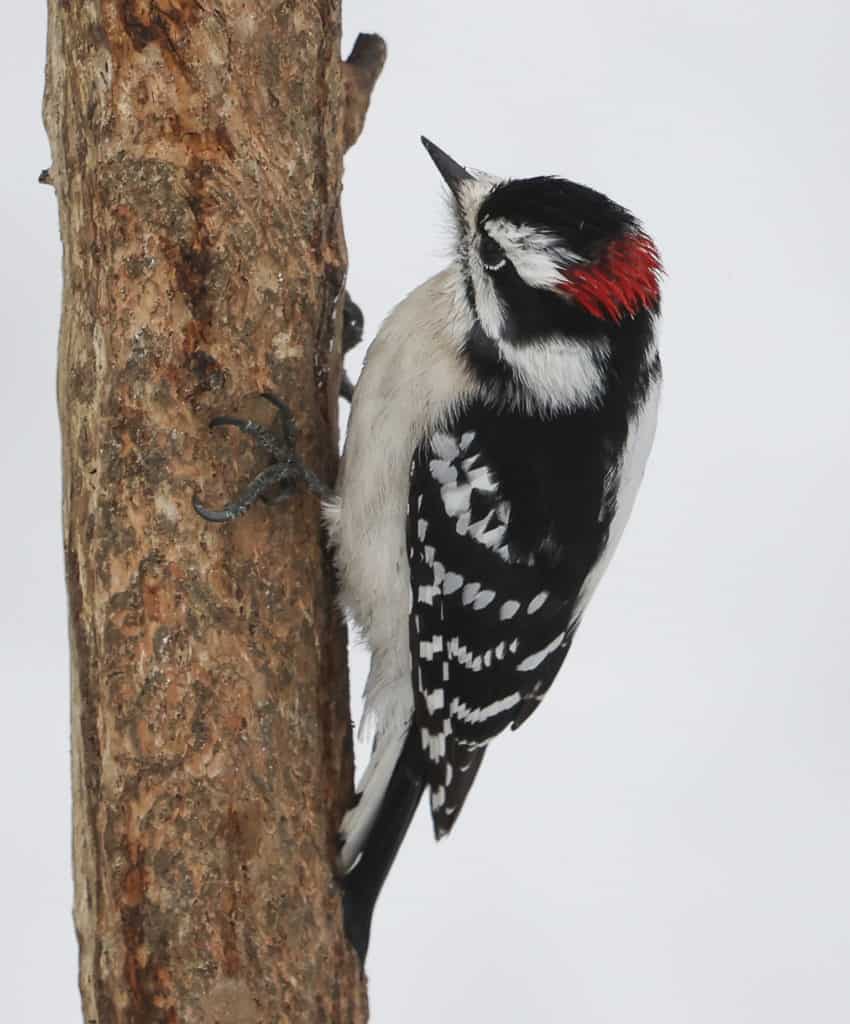Creature Feature

Small Woodpecker Makes Itself at Home
Story and photo by Wayne Bierbaum
I have a bluebird box that sits about 20 feet outside the dining room window. Because the room is dark, the birds cannot see into the room and seem quite comfortable with the location. After very cold winter nights, I sometimes will see a dark face and eye looking out from the entrance. As the morning warms up, a small bird with a dark pointed beak will pop its head out, look around and, if the area seems safe, fly away.
This downy woodpecker frequently finds shelter in the bluebird box. The little woodpecker seems to have some pent-up energy because invariably it leaves signs of its decorating ideas. The opening gets enlarged or the interior walls chipped at so they are no longer flat. The box is quite old now so I would think that with too many woodpecker alterations, I would just replace the box. So far though the bluebirds do not seem to be bothered.
Downy woodpeckers are the smallest and most common woodpecker in our region. In fact, they are common over most of North America. Small differences do exist between the East and West Coast birds. There are different feeding patterns and the West Coast birds are darker.
These small woodpeckers feed on insects and seeds that are usually overlooked by larger woodpecker species. In this way, they live non-competitively with the larger birds. Also, it appears that the male downy woodpeckers look for insects in smaller and lower branches of trees whereas females go higher up in the trees to feed. So, there is also less competition even between sexes.
Downy woodpeckers nest in tree cavities carved out by both members of a pair. They have one brood of two to four eggs and the young hatch quickly, in 12 days, and leave the nest after three weeks. The fledged birds follow their parents to get life lessons for several more weeks.
Downies communicate by a high-pitched staccato call and also by drumming. Males will pick out a drumming spot with a lot of resonance and rapidly tap their bills to mark territory. Sometimes they choose to drum on someone’s house or something metal near a home, making an unpleasant alarm clock. Unfortunately, they occasionally will try to make a nesting cavity in the side of someone’s home.
They do not migrate—individual birds can live up to 11 years and may frequent just one urban or suburban neighborhood. They are the most common woodpecker found at feeders and particularly enjoy suet and peanuts. They are sometimes quirky birds with distinct individual personalities and over time you can start to recognize the bird that visits your home.
